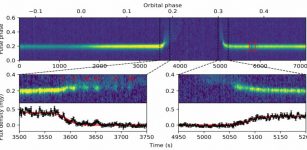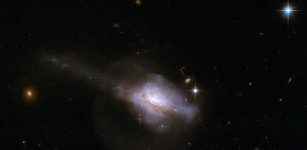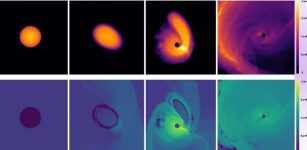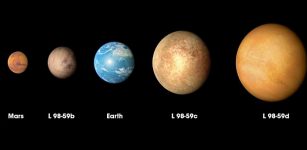“Bloatars” – Abnormal Stars Eating Planets
MessageToEagle.com – These objects are a new class of stars with luminosities of much more massive stars.
Astronomers say that the strange stars are too cool to be ordinary stars, with analysis of their infrared light emissions indicating surface temperatures between 1700 and 2200 Kelvin.
They are more like brown dwarfs, objects intermediate in mass between planets and fully developed stars, and having the colors and surface temperature similar to those of brown dwarfs.
Cluster NGC 3603. Image Credits: NASA/ ESA/ STScI/Aura (The Hubble Heritage)
As the stars appear to be “bloated”, astronomers dubbed them “bloatars”.
Astronomers using Hubble Space Telescope with its Wide Field Camera 3 (WFC3) have identified 9 oddly bloated objects in the core of the massive young galactic cluster NGC 3603.
“All the hints we have collected on these 9 objects on the basis of our data support this hypothesis: their cool temperature, their higher luminosity with respect to field and/or cluster BDs, their clustered spatial distribution, their CMD similar to that of PMS stars in NCG 3603,” the team says in a paper to appear in The Astrophysical Journal (arxiv.org/1101.4521).
According to Loredana Spezzi at the European Space Agency in Noordwijk, the Netherlands. these bloated stars would also be bigger and brighter than brown dwarfs, explaining how they could be seen at such a great distance.
Scientists get to solve puzzles every day, so here is yet another puzzle to solve. We know that brown dwarfs are dim objects that are too large to be called planets and too small to be stars.
Star eating one of its close-in planets in the Constellation Auriga, 600 light years from Earth. Credits: NASA/ESA/G. BAcon STScl
The “bloatars” observed in NGC 3603 should be far too faint to detect in the cluster NGC 3603 located at the distance of 20,000 light years from Earth.
How could “bloatars” be formed? Astronomers have two possible scenarios.
“First, that the system was formed as a very close binary system, and that the secondary has overflowed its Roche Lobe [a region of space around a star within which orbiting material is gravitationally bound to that star]. Second, the Bloatar has recently swallowed an orbiting hot Jupiter planet?” the team of astronomers report in their paper.
The idea of stars “swallowing planets” is not new in the literature. A few giant and dwarf stars have been suggested to undergo atmospheric expansion and swallowing of relatively massive planets in close orbits.
The star’s gravity rips the planet apart and captures its debris.This captured debris would form a temporary outer atmosphere for the star, which would be cooler than the star’s normal light-emitting surface.
This process may serve as explanation of the apparent low temperatures of the nine mysterious objects – the “bloatars” in the cluster NGC 3603.
MessageToEagle.com












